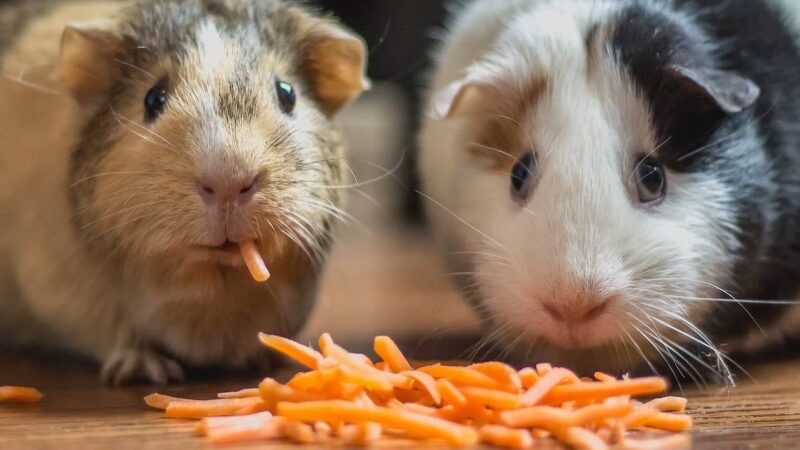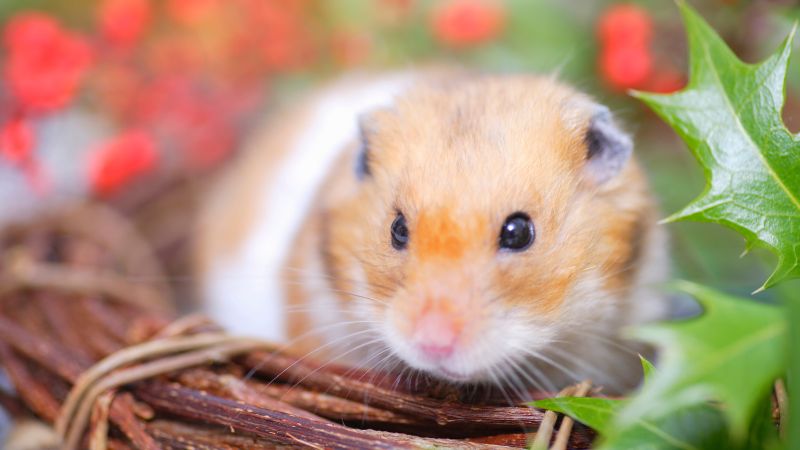Hamsters are active pets that need plenty of space to run and play. But often standard hamster cages don’t allow enough square footage, especially for larger Syrian species. This can lead to boredom, stress, and repetitive behaviors.
The solution? Building upwards! Utilizing vertical space by creating multi-level habitats provides so much more room for your hammy to explore. Stacked platforms, interconnected ramps, towering tubes – the options are endless when going vertical.
In this comprehensive guide, we’ll cover everything you need to know to design a customized multi-tier home that keeps your hamster engaged. You’ll learn layout considerations, platform ideas using readymade and DIY options, add-ons to connect levels, and tips for safety and accessibility. Let’s get started maximizing your hamster’s living space!
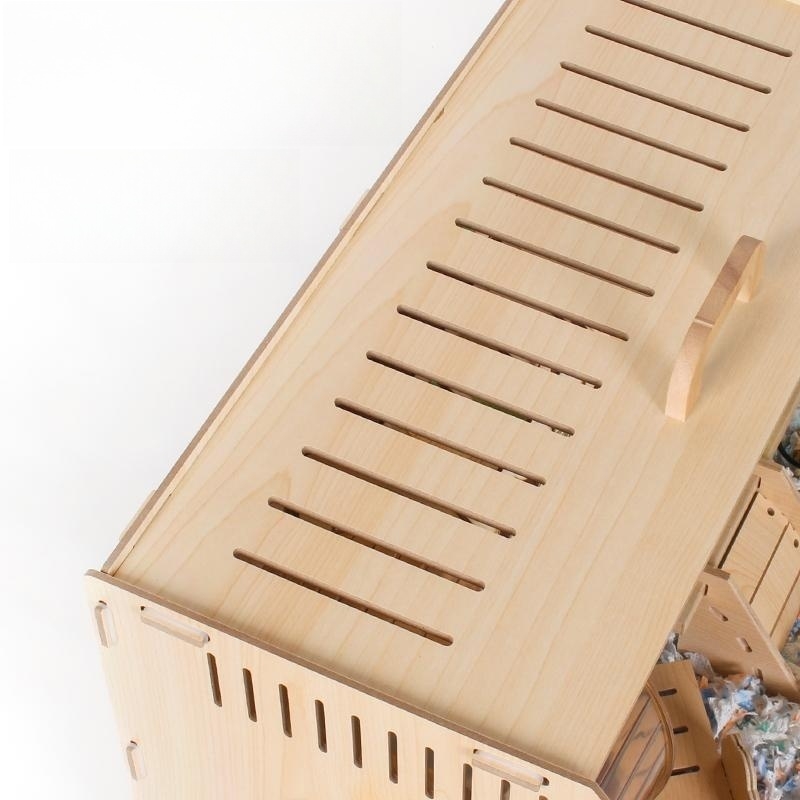
Benefits of Multi-Level Housing
Here are all the advantages of multi-tiered hamster habitats:
- Much more floor space than a flat cage. Provides ample room to run, forage, and burrow. Prevents boredom.
- Adds visual interest and mental stimulation. Engages their curiosity and natural climbing instinct.
- Allows for specialized areas and functions on different levels – feeding, housing, bathing, and exercise zones.
- Offers great physical activity climbing up and down between platforms using ramps, tubes, and ropes.
- Can incorporate exciting gear like winding tube slides, suspended rope bridges, and swings.
- Fully customizable layouts and accessories to suit each individual pet’s abilities and needs.
- Accommodates larger accessories like wheels, houses, and sand baths.
- Promotes natural climbing behaviors hamsters enjoy. Especially good for energetic dwarf species like Roborovski’s.
The basic rule is always bigger when it comes to hamster real estate. Multi-level setups creatively provide expansion room both horizontally and vertically.
Cage Foundation Options
You need a solid framework to build your hamster highrise. Here are suitable basic cage options:
- Wire cage – Classic wire cages offer excellent visibility and ventilation. Look for large, tall models advertising more generous dimensions. Popular styles include Crittertrail, Kaytee, and Savic cages.
- Plastic cage – Tank-style plastic hamster cages like the Sterilite ClearView provide an enclosed base with burrowing space. Then simply attach the wire levels above.
- Detached platforms – Build separate platforms that insert into basic open cages. Allows for greater customization.
- Modular cages – Brands like Kaytee My First Home allow add-on parts like extensions, tunnels, and connectors. Expand in any direction.
- Aquariums – Large fish tanks are very spacious but limit ventilation. Must modify tank lid with wire mesh.
- DIY-built cage – For the ultimate custom job, construct a wood or melamine multi-level frame from scratch. Sky’s the limit when DIYing.
Ideally, choose an initial wire or plastic cage then customize further by adding levels and platforms. DIY builds allow for endless creativity too if you’re handy!
Readymade Platform Ideas
For quick, easy-level building, use readymade platforms:
- Grid wire shelving – Affordable wire storage cubes make instant platforms. Secure together with zip ties or binder clips.
- Wooden shelves – Purchase readymade solid wood shelves. Look for kiln-dried pine. Cut to fit if needed.
- Ceramic tiles – Adhere non-porous ceramic tiles to platforms for warmth. Held on with aquarium silicone.
- PVC buckets – Flip small PVC buckets upside down. Cut a hole in the bottom for access.
- Metal bowls – Use stainless steel dog bowls. Weigh down to prevent tipping.
- Litter pans – Heavy-duty plastic litter trays work well. Ensure high enough edges.
- Wood houses – Turn enclosed wood hideaways into lounging platforms. Provide multiple exits.
Aim for a variety of textures – try tiles, fleece scraps, shredded paper, timothy hay, and aspen shavings on platforms. Arrange hideouts, food bowls, and toys thoughtfully between levels.
DIY Platforms and Levels
For more customization, build your own platforms:
- Wood boards – Construct platforms from untreated kiln-dried pine boards.
- Plastic grid – Use light but strong hardware grid squares. Cover in fleece for grip.
- PVC pipes – Connect PVC pipes with joints into ladders or jungle gym structures.
- Cement mixing tubs – Sturdy lightweight tubs flipped upside down.
- Cardboard tubes – Stuff paper towel rolls with bedding or hay.
- Ceramic plant pots – Turn pots on their side for instant hideaways.
- Hanging baskets – Attach wire hanging baskets stuffed with bedding for aerial coves.
- Egg cartons – Flip lid for platforms. Punch holes in cups for accessible hideouts.
Customizing with homemade accessories allows you to cater exactly to your hamster’s personality and abilities. DIYing saves money too!
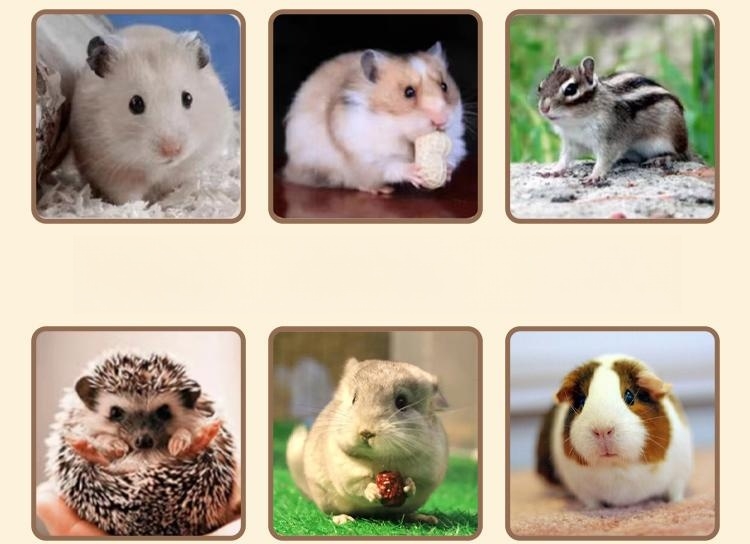
Level Layout Considerations
When planning your multi-level layout, keep these tips in mind:
- Gradually increase platform height as you build upwards. Start with just 3-4 inches high at the first level.
- Allow more open floor space on lower levels for food, and wheels. Smaller platforms are fine higher up.
- Overlap platforms in creative ways – offset shelves slightly for more running room.
- Incorporate climbing walls into the backdrop – install resin rock ledges or textured wood.
- Place hideouts strategically throughout levels for security. At least one per level.
- Angle platforms to create triangular play zones jutting out from corners.
Getting creative with shapes, angles and overlap makes your habitat truly 3 dimensional. Don’t just stack squares! Form a dynamic, interactive environment.
Connecting Multiple Platforms
The key to successfully linking platforms into a unified habitat is providing gradual inclines and stable access points between levels. Use:
- Ramps – Graded narrow wood planks create gentle slanted ramps. Attach cleats crosswise for grip. Include side railings.
- Ladders – Vertical ladders with rungs allow steeper climbs but space rungs based on the hamster’s stride.
- Spiral ramps – Ramps wrapped around dowel rods or poles create gradually winding corkscrew access.
- Steps – Offset sturdy stair steps made from wood blocks or textured resin platforms.
- Tubes – Clear acrylic or plastic tubes act as tunnels and shoots between platforms.
- Bridges – Sturdy wood or plastic bridges laid across gaps. Can make curvy designs.
- Rock wall – Turn the entire cage wall into a textured climbing wall using staggered shelves, ledges, and grips.
Weave exciting toys and accessories into the routes between platforms like hanging chew toys, food puzzles, and lookout perches. Ramp inclines shouldn’t exceed 45 degrees. Get creative connecting your levels!
Maximizing Vertical Real Estate
When arranging platforms, utilize all available space with these tips:
- Vary platform height – Add levels at different heights like 3″, 5″, 8″, and 12″ off the ground.
- Increase platform size at higher levels to allow running and foraging. More room above, and smaller platforms down below.
- Bridge gaps between accessories – Connect a wheel on one level to a lookout perch on another.
- Use corner space – Shelves wedged into corners maximize usable square footage.
- Incorporate vertically – Create climbing walls, perches, and ceiling-suspended toys. Use all vertical space.
- Install “hamster highways” – Long straight tubes or tunnels along the back act as quick thoroughfares for transit.
Take advantage of every inch inside their habitat! Extend play space further by connecting accessories wall-to-wall, corner-to-corner, filling your hamster mansion.
Healthy Habitat Additions
Any well-designed habitat needs the basics, like food, water, and ample bedding. With multi-stories, distribute necessities thoughtfully:
- Food bowls should be easy to access on at least 2 lower levels. Choose no-tip ceramic bowls.
- Water bottles need to be mounted on levels throughout their home, so they stay hydrated. Use two clips for security.
- Include hideaways and nesting huts on every level for security. Afraid hamsters will fall without them overhead.
- Place sand baths up top under basking lights. Bury treats in the sand to encourage digging.
- Add supplemental heating and lighting elements above if needed to maintain ideal temperature gradients.
- Ensure good ventilation with mesh panels or modified tank lids. Prevent dangerous drafts.
- Provide lots of soft bedding substrate for burrowing. Aspen shavings or paper-based bedding.
Even with exciting accessories, don’t overlook their basic survival needs on every level. Food, water, warmth and comfort should be accessible.
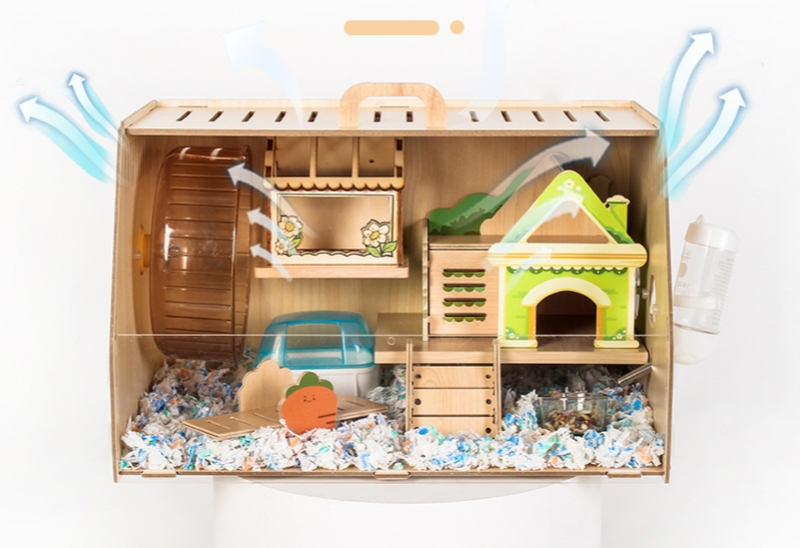
Safety First
When engineering multi-level habitats, safety is also essential. Follow these precautions:
- Only use completely non-toxic kiln-dried woods. No pressure-treated pine or cedar. Avoid fumes.
- Thoroughly sand and round off any wooden edges, ramps, or perches to prevent scratches or splinters.
- Use only heavy ceramic or stainless steel non-tip food and water bowls, not light plastics.
- Ensure water bottles are very securely fastened with 2 robust clips to prevent dangerous leaks or accidents.
- Check platforms and ramps for stability before use and reinforce with brackets if needed.
- Encase dangerous play elements like hanging ropes in acrylic or fine wire mesh to avoid falls.
- Arrange very soft bedding or textiles beneath the highest levels and play spots in case of tumbles.
- Evaluate their navigation skills on new layouts. Adjust ramp steepness and ladder rung spacing accordingly.
Go slowly introducing new levels and observe carefully. Make any needed adjustments in the early stages to ensure safe accessibility on all tiers. Safety first!
Benefits for Pet and Owner
Building up vs. out has many advantages:
For hamsters:
- More space to exhibit natural behaviors like climbing, hiding, and burrowing.
- Mental stimulation from changing vantage points.
- Opportunity to forage and search for treats in a complex habitat.
- Physical exercise ascending and descending between tiers.
- Promotes healthy instincts to explore new environments.
For owners:
- Creative DIY project if making elements yourself.
- The chance to pamper your pet in their own customized mansion!
- Interactive play watching them scamper through levels.
- Learning opportunities to study their abilities and behaviors.
- Less floor space is required for their home with a compact, vertical footprint.
With a thoughtfully designed multi-story home, both pet and owner benefit from the enhanced experience!
Conclusion
Building upwards with stacked platforms, climbing structures, and interconnecting accessories lets you create an intricate, stimulating world for inquisitive hamsters.
Arrange ramps, tunnels, steps, and toys to allow easy navigation between tiers. But also incorporate basic necessities on every level, like food, water, and hideaways.
Take it slow when first introducing your hamster to new vertical territory and make any needed tweaks. Soon they’ll be racing up and down their multi-level mansion, exploring all it has to offer!
With ample exercise and mental enrichment, your hamster will have the happiest home.

